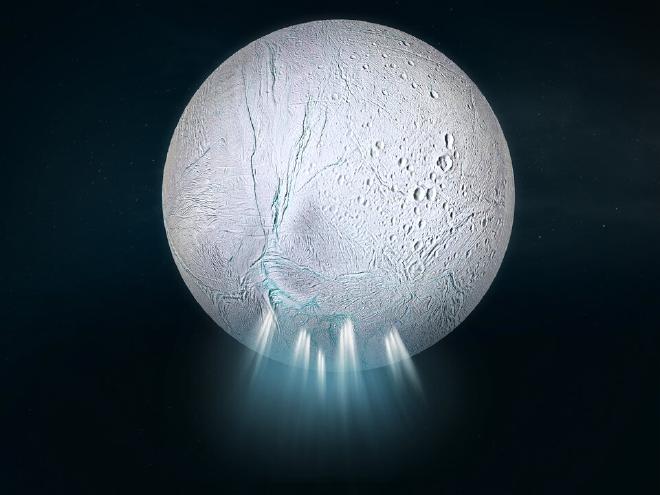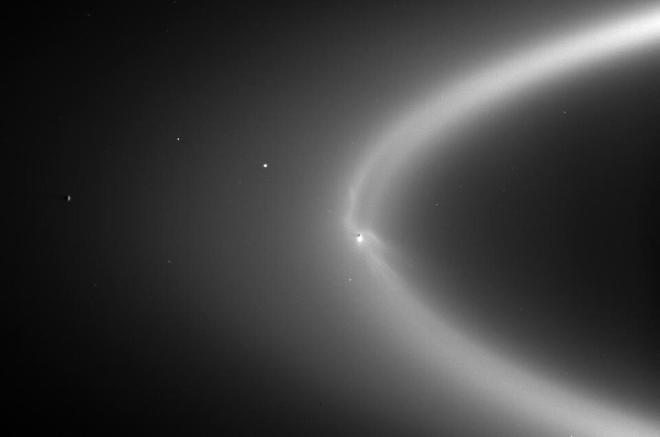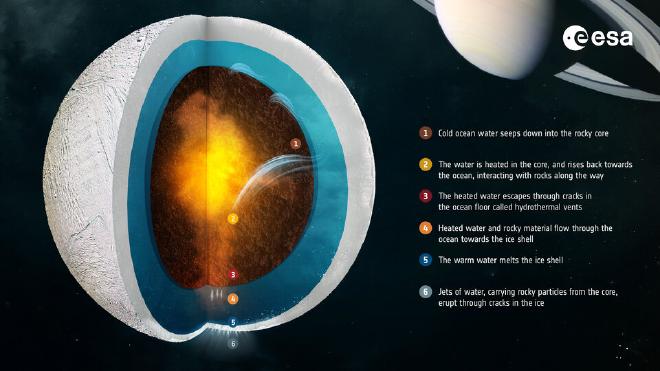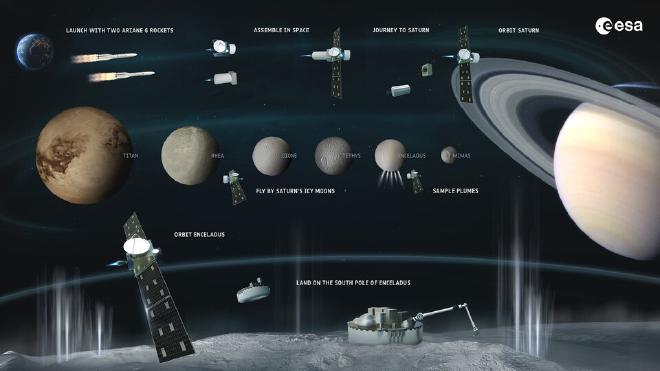

Published today in Nature Astronomy, this discovery further strengthens the case for a dedicated European Space Agency (ESA) mission to orbit and land on Enceladus.
Lead author Nozair Khawaja explains what we already knew: “Cassini was detecting samples from Enceladus all the time as it flew through Saturn’s E ring. We had already found many organic molecules in these ice grains, including precursors for amino acids.
The ice grains in the ring can be hundreds of years old. As they have aged, they may have been ‘weathered’ and therefore altered by intense space radiation. Scientists wanted to investigate fresh grains ejected much more recently to get a better idea of what exactly is going on in Enceladus’s ocean.

Fortunately, we already had the data. Back in 2008, Cassini flew straight through the icy spray. Pristine grains ejected only minutes before hit the spacecraft’s Cosmic Dust Analyzer (CDA) instrument at about 18 km/s. These were not only the freshest ice grains Cassini had ever detected, but also the fastest.
The speed mattered. Nozair explains why: “The ice grains contain not just frozen water, but also other molecules, including organics. At lower impact speeds, the ice shatters, and the signal from clusters of water molecules can hide the signal from certain organic molecules. But when the ice grains hit CDA fast, water molecules don’t cluster, and we have a chance to see these previously hidden signals.”
They saw that certain organic molecules that had already been found distributed in the E ring were also present in the fresh ice grains. This confirms that they are created within Enceladus’s ocean.
They also found totally new molecules that had never been seen before in ice grains from Enceladus. For the chemists reading, the newly detected molecular fragments included aliphatic, (hetero)cyclic ester/alkenes, ethers/ethyl and, tentatively, nitrogen- and oxygen-bearing compounds.
Co-author Frank Postberg adds: “These molecules we found in the freshly ejected material prove that the complex organic molecules Cassini detected in Saturn’s E ring are not just a product of long exposure to space, but are readily available in Enceladus’s ocean.”
Nicolas Altobelli, ESA Cassini project scientist adds: “It’s fantastic to see new discoveries emerging from Cassini data almost two decades after it was collected. It really showcases the long-term impact of our space missions. I look forward to comparing data from Cassini with data from ESA’s other missions to visit the icy moons of Saturn and Jupiter.”

Returning to Enceladus #
Discoveries from Cassini are valuable for planning a future ESA mission dedicated to Enceladus. Studies for this ambitious mission have already begun. The plan is to fly through the jets and even land on the moon’s south polar terrain to collect samples.
A team of scientists and engineers is already considering the selection of modern scientific instruments that the spacecraft would carry. This latest result made using CDA will help guide that decision.

“Even not finding life on Enceladus would be a huge discovery, because it raises serious questions about why life is not present in such an environment when the right conditions are there,” says Nozair.
Citation #
- The study Detection of Organic Compounds in Freshly Ejected Ice Grains from Enceladus’s Ocean by N. Khawaja et al. is published today in Nature Astronomy. DOI: 10.1038/s41550-025-02655-y
Lead author Nozair Khawaja conducted the research at Freie Universität Berlin and the University of Stuttgart, both in Germany. Frank Postberg is also affiliated with Freie Universität Berlin.
Cassini-Huygens was a cooperative project of NASA, ESA and the Italian Space Agency. It comprised two elements: the Cassini orbiter and the Huygens probe.
Cassini’s Cosmic Dust Analyzer (CDA) was led by the University of Stuttgart in Germany.
Contact [Notaspampeanas](mailto: notaspampeanas@gmail.com)

